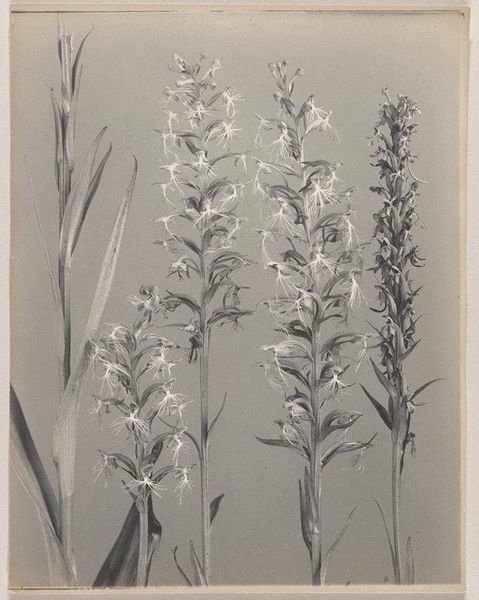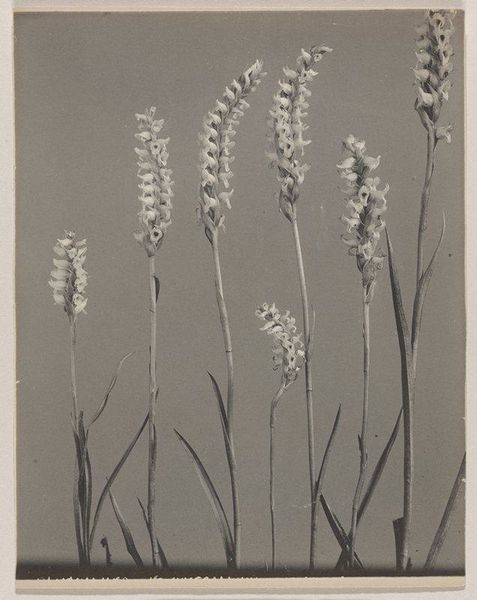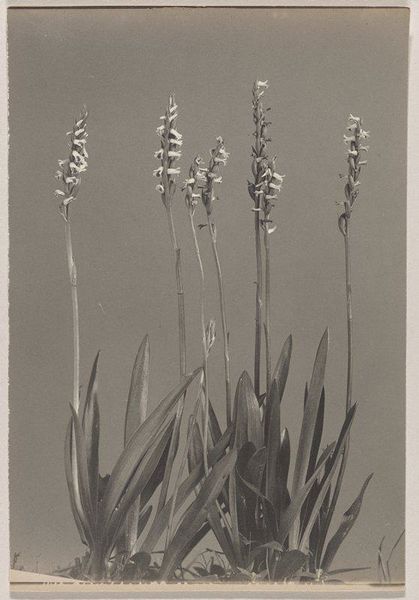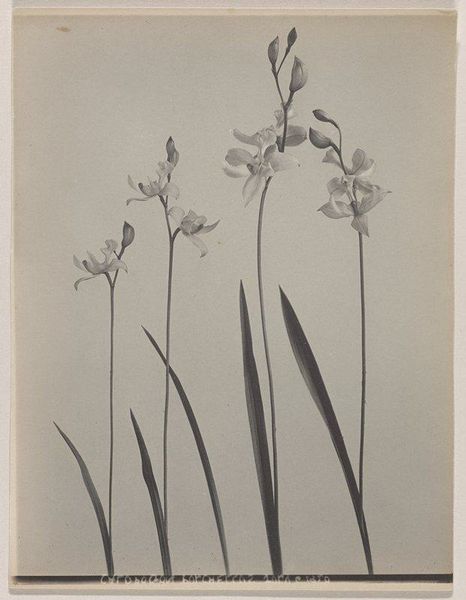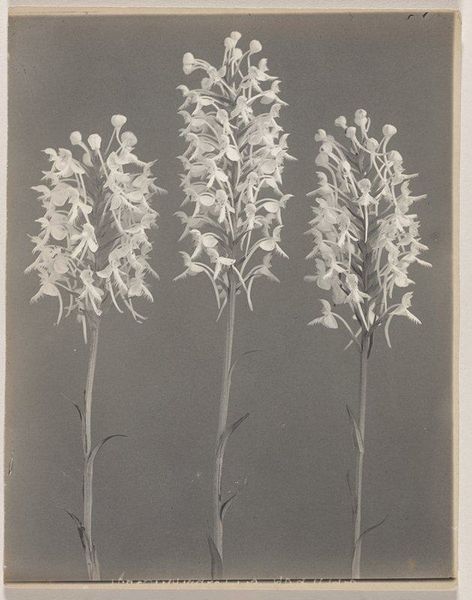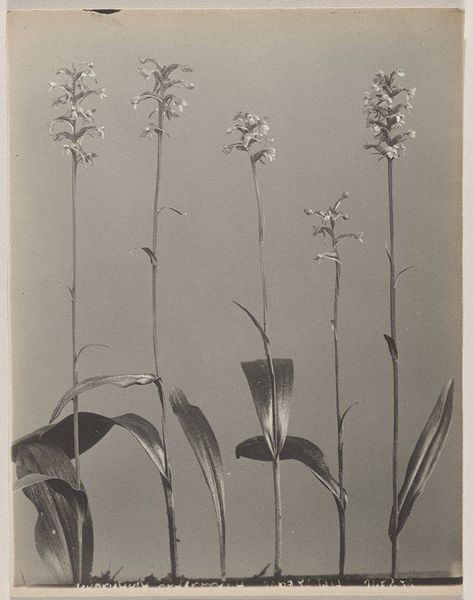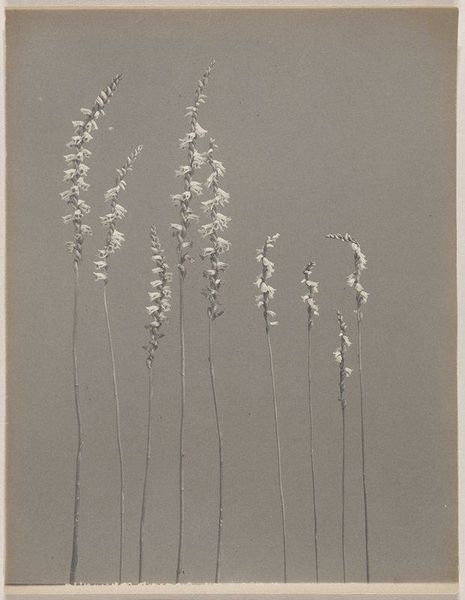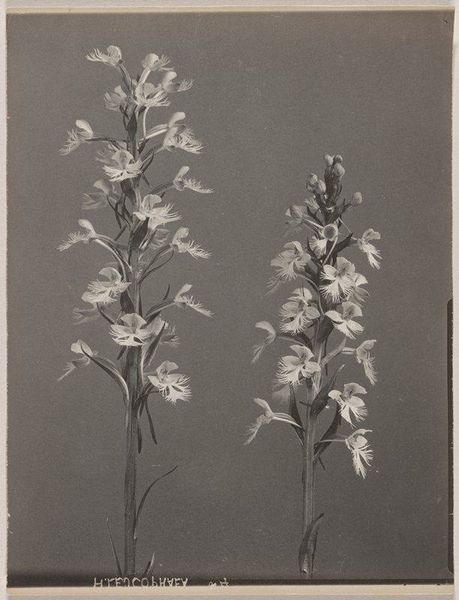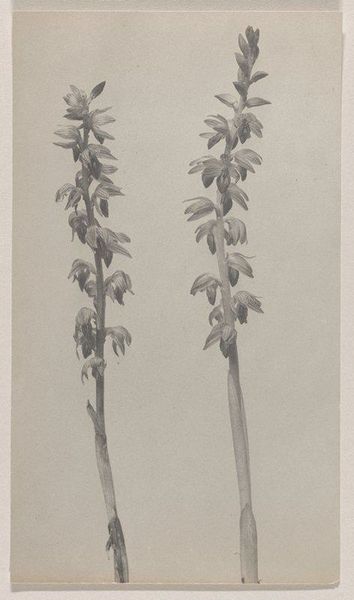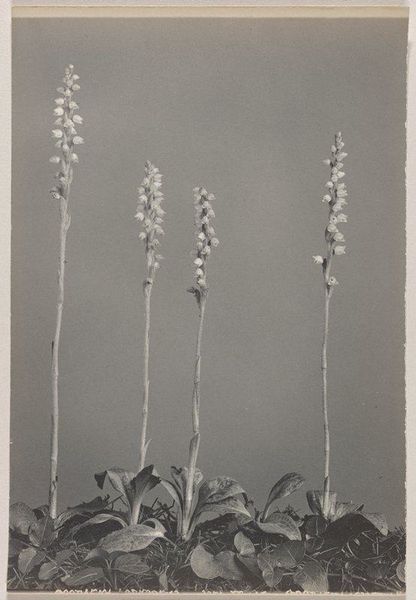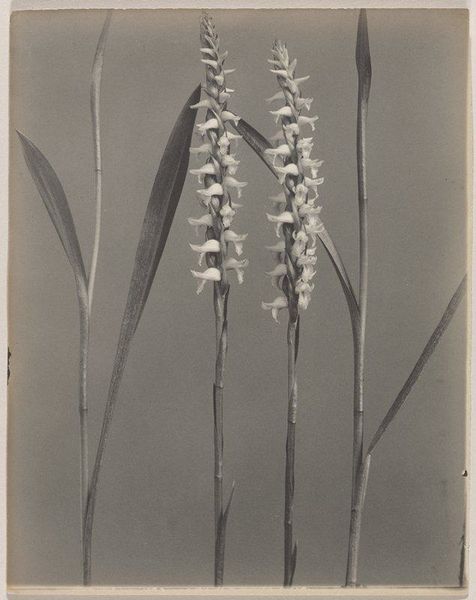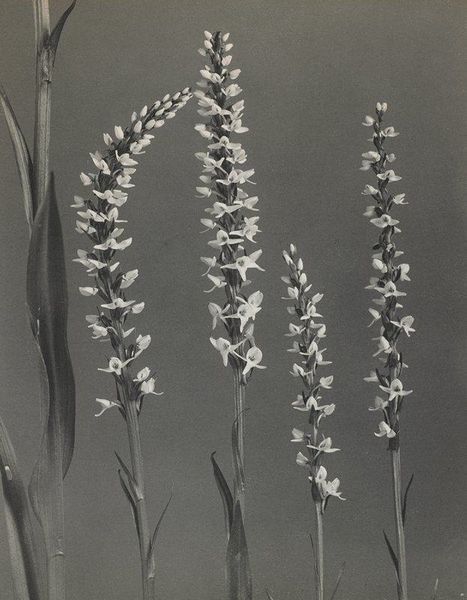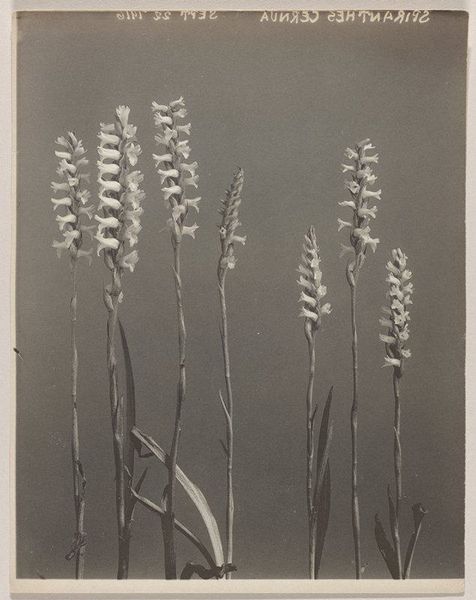
Spiranthes cernua var. ochroleuca- Yellow Ladies' Tresses 1931
0:00
0:00
photography
#
still-life-photography
#
photography
#
botanical art
Dimensions: 9 5/8 x 6 1/2 in. (24.45 x 16.51 cm) (image)10 1/16 x 6 1/2 in. (25.56 x 16.51 cm) (sheet)
Copyright: No Copyright - United States
Edwin Hale Lincoln made this gelatin silver print of Yellow Ladies’ Tresses. His work sits within a fascinating moment in the history of American photography and visual culture. Consider the late 19th and early 20th centuries, when photography was still a relatively new medium. It was rapidly changing how people saw the world. Photography was becoming increasingly accessible, but it was also being used by artists and scientists to document and study the natural world. Botanical photography, like this image, became a way to create a visual record of plant species. The level of detail that photography could capture was invaluable for scientific study and classification. Lincoln was creating these images at a time when there was increasing interest in the natural world, fuelled by growing concerns about industrialization and urbanization. These photographs highlight a tension between the desire to document and understand nature, and a growing awareness of the impact of human activity on the environment. Examining photography archives and the history of scientific illustration can help us better understand the cultural significance of images like this one.
Comments
No comments
Be the first to comment and join the conversation on the ultimate creative platform.
